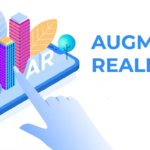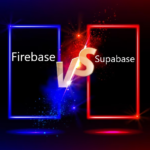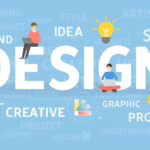
Augmented Reality (AR) has rapidly emerged as a transformative technology, revolutionizing the way we interact with digital content and our physical surroundings. To create compelling AR experiences, developers rely on robust frameworks that provide the necessary tools, libraries, and APIs. In this blog post, we will delve into the world of augmented reality frameworks, discussing their importance, key features, and popular options available today. Whether you’re a developer looking to dive into AR development or an enthusiast curious about the technology, this article will serve as a guide to understanding and choosing the right framework for your AR projects.
Importance of Augmented Reality Framework
Augmented reality frameworks play a crucial role in simplifying and accelerating the development process of AR applications. They provide a foundation of pre-built components, libraries, and functionalities, enabling developers to focus on creating immersive experiences rather than reinventing the wheel. AR frameworks handle complex tasks such as environment tracking, 3D rendering, gesture recognition, and sensor integration, allowing developers to leverage these capabilities without deep expertise in computer vision or graphics programming.
Key Features of Augmented Reality Frameworks
a. Environment Tracking: A robust AR framework should offer reliable and accurate tracking of the physical environment. This includes detecting and mapping the position and orientation of objects and surfaces, allowing virtual content to be placed and anchored correctly within the real world.
b. Rendering and Visualization: AR frameworks provide rendering capabilities to overlay digital content seamlessly onto the real world. They handle tasks like rendering 3D objects, applying lighting and shading effects and ensuring realistic integration with the environment.
c. Gesture and Interaction: Interactivity is a fundamental aspect of AR experiences. Frameworks offer gesture recognition and tracking functionalities, allowing users to interact with virtual objects using touch, gestures, or motion inputs.
d. Sensor Integration: AR frameworks leverage various sensors on devices, such as cameras, accelerometers, and gyroscopes, to gather real-time data and enhance the AR experience. They enable features like image recognition, spatial mapping, and location-based AR.
e. Cross-Platform Support: With the diversity of devices and platforms available, cross-platform compatibility is crucial for reaching a broader audience. Many AR frameworks support multiple platforms, including iOS and Android, ensuring compatibility and ease of development.
Popular Augmented Reality Frameworks
a. ARKit (iOS) and ARCore (Android): Developed by Apple and Google, respectively, these frameworks offer robust AR capabilities, including environment tracking, 3D object recognition, and plane detection. They provide extensive documentation, sample code, and integration with native development tools.
b. Unity3D: Unity is a popular game engine that has expanded its capabilities to include AR development. It provides a comprehensive suite of tools and resources for creating interactive AR experiences across multiple platforms. Unity supports integration with various AR plugins and frameworks.
c. Vuforia: Vuforia is a powerful AR platform that offers computer vision capabilities, object recognition, and marker-based tracking. It provides cross-platform support and seamless integration with popular development tools like Unity and Unreal Engine.
d. AR.js: AR.js is an open-source JavaScript library that allows developers to create AR experiences directly in web browsers. It supports marker-based tracking, location-based AR, and image recognition. AR.js simplifies the deployment process, as users can access AR content without installing dedicated apps.
e. Wikitude: Wikitude is a comprehensive AR platform that supports marker-based tracking, image recognition, and location-based AR. It provides a range of SDKs and tools for developing AR applications across various platforms.
Considerations for Choosing an AR Framework
a. Feature Set: Assess the framework’s features and capabilities based on the requirements of your AR project and the specific needs of your target audience. Consider whether the framework provides the necessary functionalities, such as environment tracking, rendering capabilities, and gesture recognition, to bring your vision to life.
b. Platform Support: Ensure that the AR framework supports the platforms you intend to target, whether it’s iOS, Android, or web browsers. Cross-platform compatibility can save development time and resources, allowing you to reach a broader user base.
c. Documentation and Community Support: Look for an AR framework that offers comprehensive documentation, tutorials, and community support. Robust documentation and an active community can help troubleshoot issues, provide guidance, and foster collaboration with other developers.
d. Performance and Optimization: Evaluate the framework’s performance and optimization capabilities. AR experiences demand real-time rendering and tracking, so it’s essential to choose a framework that prioritizes efficiency and delivers smooth, responsive experiences on a variety of devices.
e. Integration with Existing Tools and Libraries: Consider how well the AR framework integrates with other tools, libraries, or game engines you may already be using. Seamless integration can streamline the development process and leverage existing assets and workflows.
f. Licensing and Pricing: Understand the licensing model and pricing structure of the Augmented Reality framework. Some frameworks offer free tiers for personal or non-commercial use, while others require paid licenses or offer enterprise-grade solutions. Consider your budget and project requirements when evaluating the pricing options.
Conclusion
Augmented reality frameworks are the building blocks for creating immersive and interactive AR experiences. They provide developers with the necessary tools, libraries, and functionalities to bring virtual content into the real world. As the demand for AR applications continues to grow, the choice of the right framework becomes crucial for delivering captivating and seamless experiences.
Whether you opt for platform-specific frameworks like ARKit and ARCore, versatile engines like Unity3D, or open-source libraries like AR.js, each framework offers unique features and capabilities. By considering factors such as feature set, platform support, documentation, performance, integration, and pricing, you can make an informed decision that aligns with your project goals and requirements.
As technology advances and AR becomes more prevalent, augmented reality frameworks will continue to evolve, introducing new features, improved performance, and expanded compatibility. Embrace the world of augmented reality frameworks and embark on a journey to create immersive and transformative AR experiences that captivate and engage users like never before.













































Recent Comments